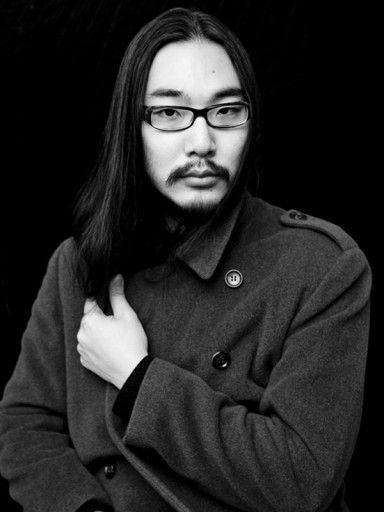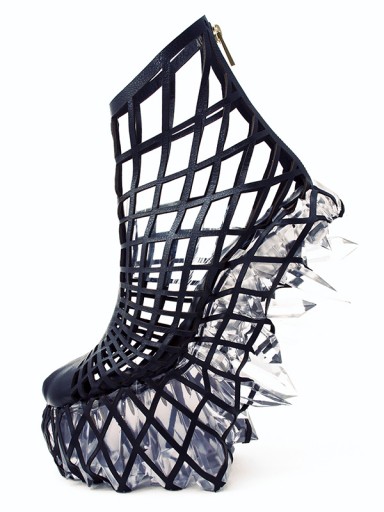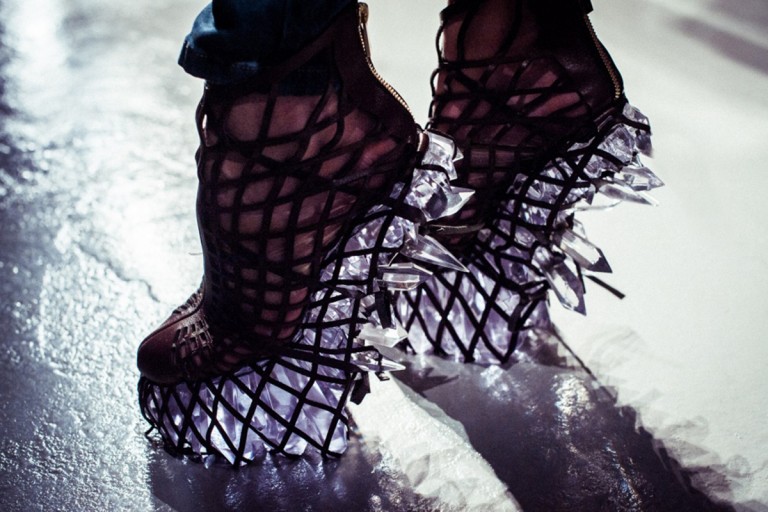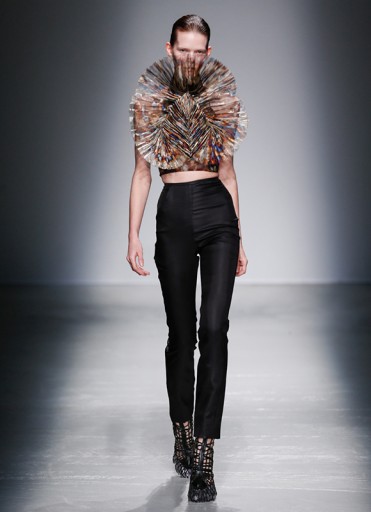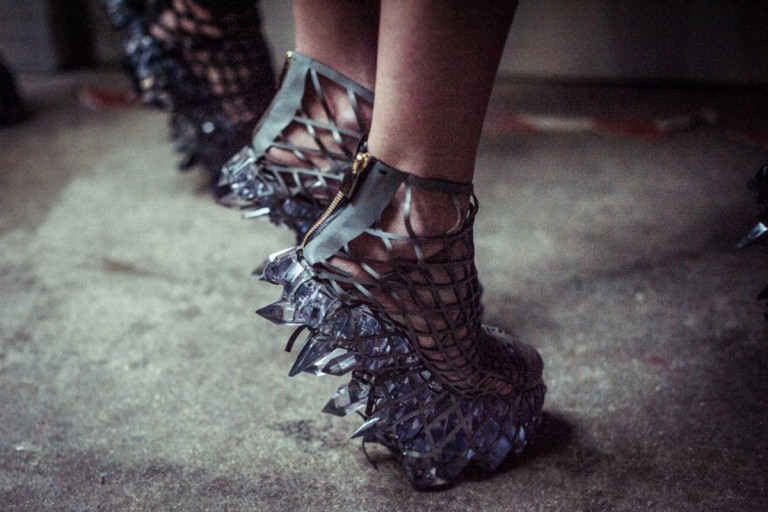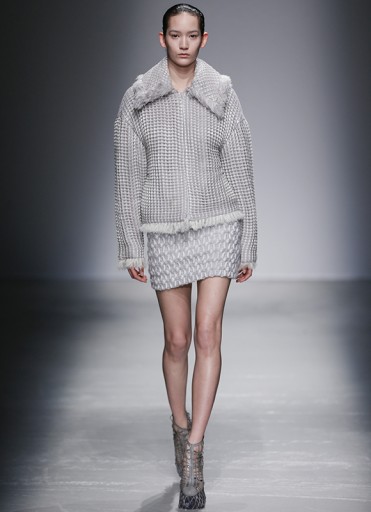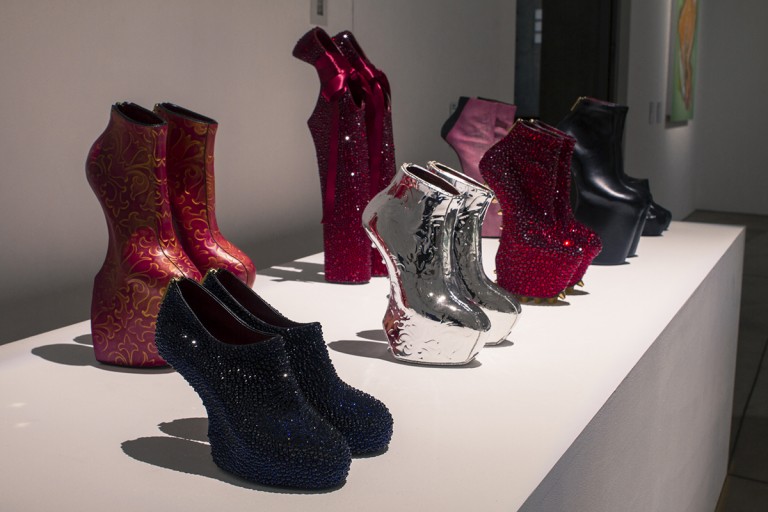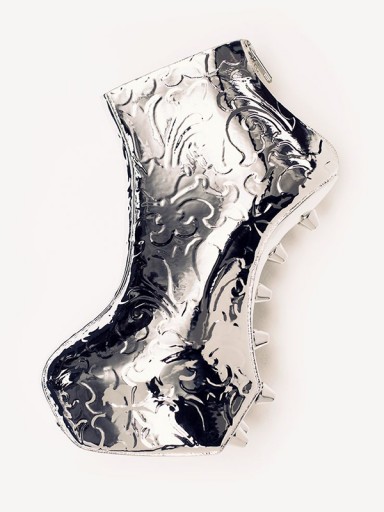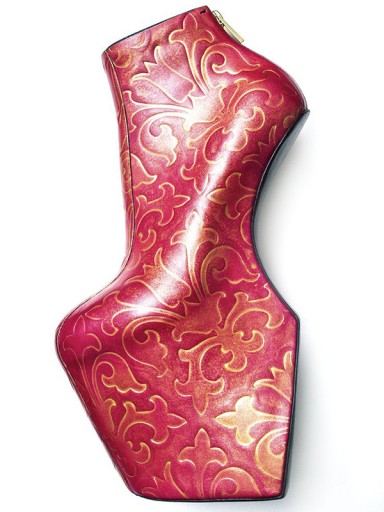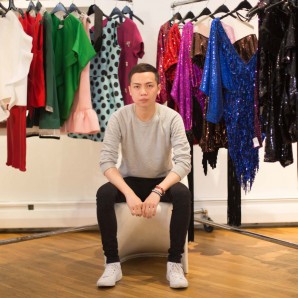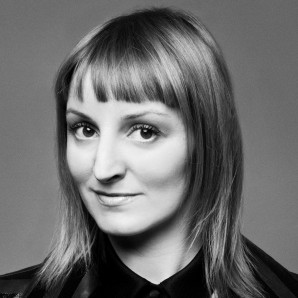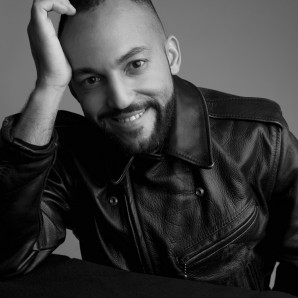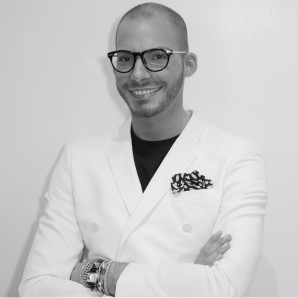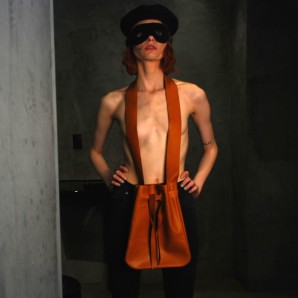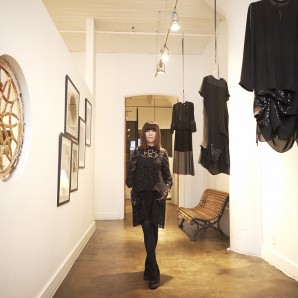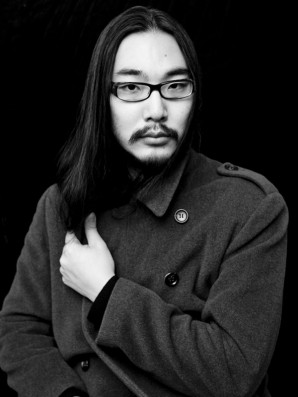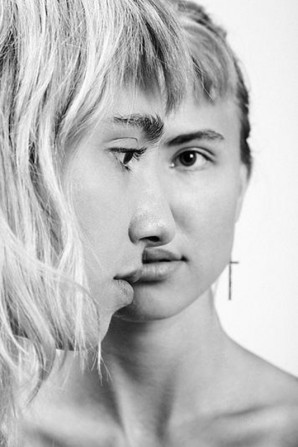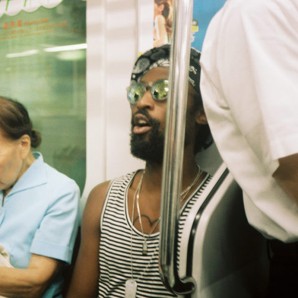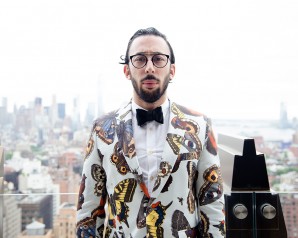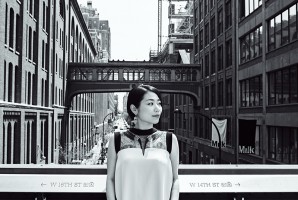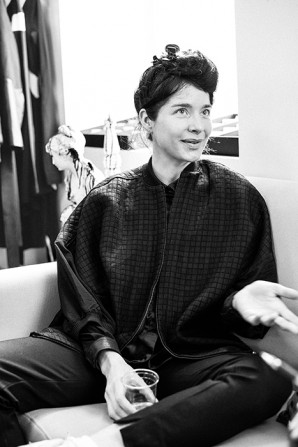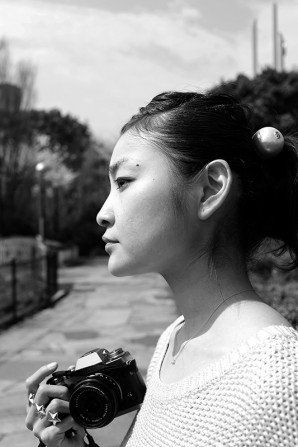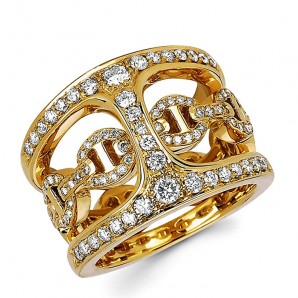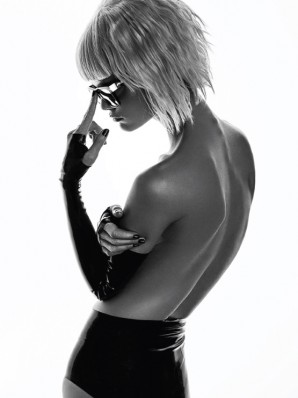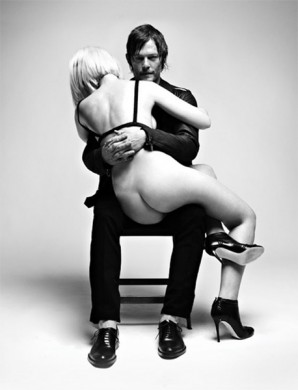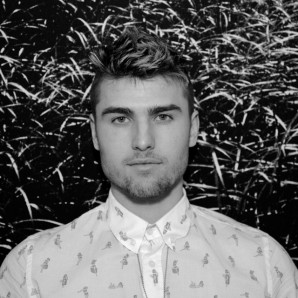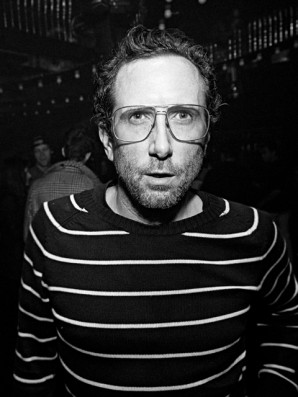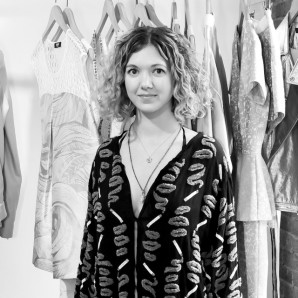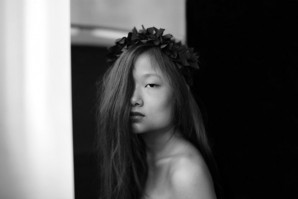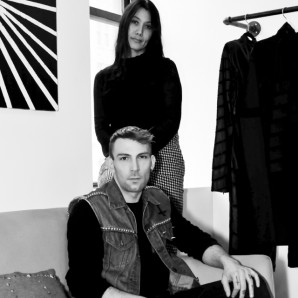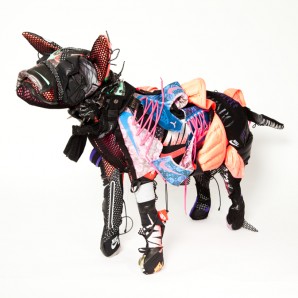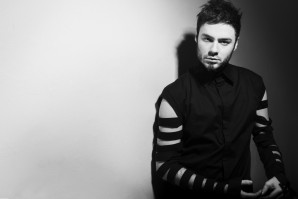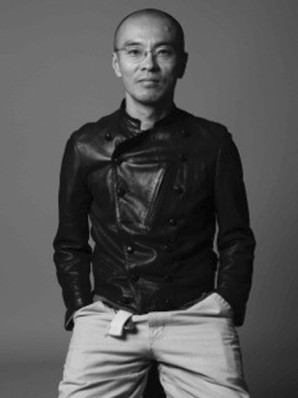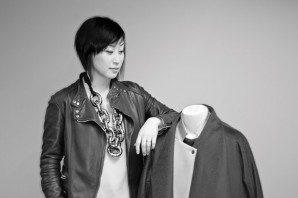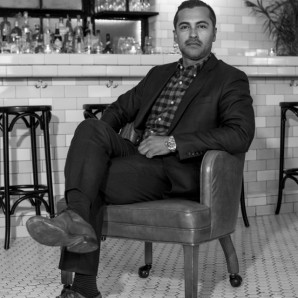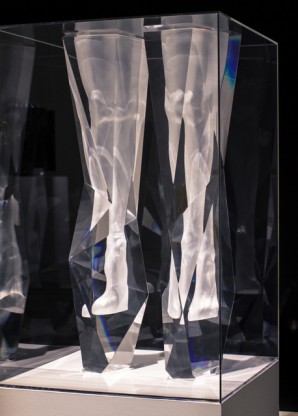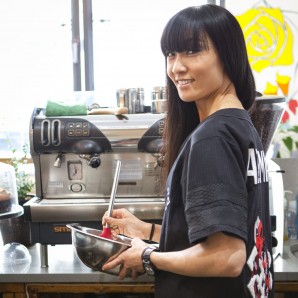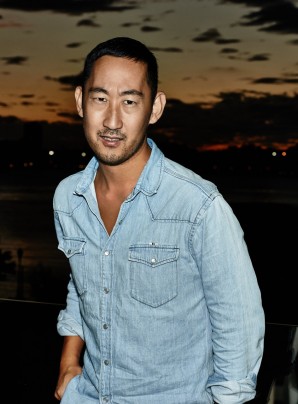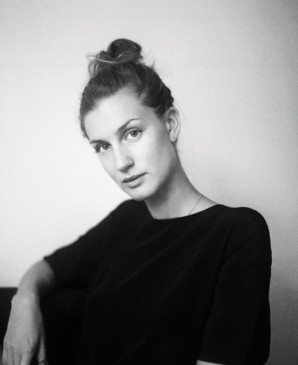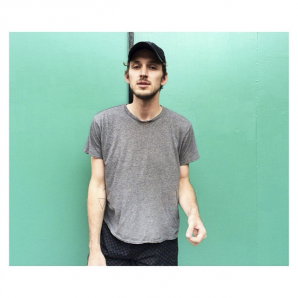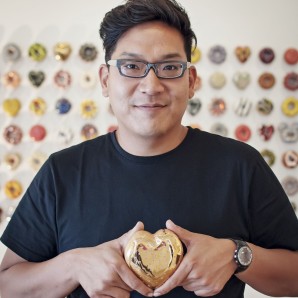"Cheng-Huai Chuang was introduced to fashion at a young age"
Noritaka Tatehana Exclusive Interview
The talented young Japanese designer, Noritaka Tatehana, who collaborated with Iris Van Herpen to design Lady Gaga’s shoes.
Today, Lady Gaga is probably one of the most famous pop artist of the 21st century. Regarding Lady Gaga’s style, the “heelless shoe” could possibly be considered one of her most well-known and iconic accessories. Did you know that the person who created Lady Gaga’s iconic “heelless shoes” was just young 24-year-old Japanese designer named Noritaka Tatehana at that time?
On March 10th, 2015 Noritaka Tatehana unveiled his stunningly unconventional 3D crystal shoes at the collaborative show between himself and Iris Van Herpen at the Fall/Winter Paris Fashion Week Collection. These works of art/shoes have his signature lack of a heel and thrusting crystals as the platform. Recently, TWELV asked Mr. Tatehana about this collaboration with the Holland fashion brand, Iris Van Herpen which is known for its unique and futuristic design.
---------- Noritaka Tatehana's Interview ----------
1. What was the beginning of this collaboration with Iris Van Herpen?
I’d never meet her before, but I knew of her. I was thinking that our direction for the brand is quite similar and we also have a mutual friend, Daphne Guinness, so I’ve always been thinking that if we were to do something together, it would be really interesting.
One day, she came to Japan for the event of a collaboration with Dom Perignon, and I was also invited the event, so I said hello. Then she asked to collaborate with me. So that was the beginning of this collaboration and I am very happy that I was able to be a part of it.
2. Was it time-consuming to produce the crystal shoes for the runway?
Honestly, that was incredibly hard work. When I normally make the shoes, I don’t fill the inside of platform with material, so usually the inside is empty. However, for this time, it didn’t look bright and clear if I made it like that. That’s why I had to fill the inside of platform with the material. It meant the shoes would be really heavy, so I had to think about two things at the same time: confortance and function. It was because of the models that they worked on the runway!
3. What were the good points of collaborating with her?
The greatest thing for me was that I could stimulate the young designers because of this collaboration at Paris collection. In most cases, a lot of young Japanese designers can’t go to Paris Fashion Week on their own ability, they need a sponsor or something. I didn’t want to go that way. I wanted to go to that kind of stage by myself, so I think that was the greatest thing, that I could do this with no support. Actually, I think collaborating with a foreigner designer like this time is surely spreads the world.
4. What’s your inspiration for usual shoes making?
I was born in 1985, so that was about 40 years after the world war. It means that there were so many histories that I didn’t know. The Japan of today required so many turning points like Meiji-Ishin, the revolution of the Emperor, and a World War.
And our generation didn’t know that, right? So we live without knowing about these histories and when I became artist with this job, I realized that artists especially need a sociability. “Sociability” means not only thinking about oneself, but also society as a whole. For example, thinking of the position of Japan in this world, or thinking of one’s position in Japan, and thinking what one should do. Artists need to have this kind of consciousness. Ultimately, I felt that the thing that I couldn’t choose was my fate; like to be born as a man, or to be born in Japan or something like that. Then, I decided to learn about it, about “the background of my background”. So perhaps inspiration might come from in my own mind.
5. Why do you think Japanese culture is important to you?
The main reason is that “I cannot choose my nationality.” Being Japanese, this could be my destiny, or it could be a necessity. I was too familiar with Japanese culture to tell the difference between views from foreigners seeing the Japanese and views from Japanese people seeing themselves when I was in Japan. After I stepped out of Japan, I felt that foreigners think that the Japanese are inspired by their own culture. For instance, in Japan, European-style goods are very popular because they are unique in Japan. In other words, I guess the identity of the country is really important.
6. How were you inspired by Oiran?
In university, I was studying about the Kimono as traditional Japanese fashion. However, there are many different types of Kimono: for citizens, for feudal lords, etc. Oiran fashion was really avant-garde at that time in Japan, and I was studying fashion which was tricky and eye-catching. So it quite matched with what I was seeking. I think it’s the same as young girls wearing Jeremy Scott to intimate Katy Perry.
7. You said that you want to be seen as a craftsman, more than to be considered an artist. To you, what’s the difference between them?
Now I don’t do every process from start to the end when I make shoes, but I have a feeling that I always want to be a craftsman. If I stop making the shoes with my hands, there will be so many things that I can’t comprehend for real. For instance, when I say “let’s make this shoe with this material” without knowing about the function, it doesn’t come out right. That’s meaningless. Because of this reason, I prefer to keep being a craftsman. And I think this is also good point of Japan too. For example there are many famous Japanese manufactures like the auto-mobile maker, Honda and the instrument maker, KAWAI whose founders were all craftsmen. A lot of Japanese people don’t know this story, but these companies support this country with great achievement. And the CEO of famous companies like these in Japan are usually creators and craftsmen. Of course, I have to go for the business side sometimes, but I always want to be a craftsman because I want support Japanese industry like them. But my mind might be an artist all the time.
8. What is your ultimate goal?
I felt that being an artist seems a really personal job, but it actually really isn’t a personal job. I felt this way after I started to work as an artist professionally. This is my life, but an artist's job is reflecting the era at that time. Their artwork should link to their mind and what’s happening at that time in their country, and I think artists need to make it work during the changes in periods. Speaking of my own experience, 2010 was a turning point in Japanese fashion. The changes in the era and artists should be linked to historical events happening, like world affairs or natural disasters.
My work is collected by a lot of museums, but museums are where human history is stored. For example, Strawberry Fields by Yoko Ono, this kind of creation has a message worth remembering. I don’t know when I will die, so I think my mission is to form the era exactly and then to turn it over to the next generation because I feel I’m required to do this kind of thing.
9. You always had a dream to work around the world. Do you feel that your life is exactly what you wanted now?
Because I wanted to work around the world, I had a specific vision and I did complete each objective one by one.
So almost everything is exactly as I wanted. Now I can do what I wanted, and I am more successful than I could have imagined, and I don’t feel that I have failed more than I expected. I suppose that preparation is really important. I’m glad that I kept continuing with what I wanted. When I didn't pass the university entrance exam, my grandmother said “Quit. You have no talent.” But I didn’t quit at that time and I think that was great decision. You have to decide your way by yourself. That is the most important thing in life.
10. Please leave a message to young boys and girls.
I don’t want them to imitate, but use. I mean I was the one who really imitated society, so I was thinking that I will be the top because I don’t want to be thought as the same designer as that one who I don’t think great. But when you imitate something, it’s when you are jealous for it at the same time. So I guess if there are some people who imitate me because I showed in Paris Fashion Week this time, I don’t want them to imitate, but to look closer. In other words, I hope they use my experience as a tool and study. This time, I worked with foreign people and I could attend Paris Fashion Week in the end. With this opportunity, I think I could show the same things as they do.
I had times when I was really imitating society, but when I try to out to the world, the people who I referred to were predecessors like Issei Miyake, Takashi Murakami, and many other successful people. I think I wouldn’t be successful if they did not exist. So in order to see as a reference, I want young designers to use my work as a case study. I can say anything like “hang in there with big dream!” or something. If I can provide something, it will be this kind of information. That would be the most influential information I guess.
INTERVIEWED & WRITTEN BY: MARIE ABE
PHOTO CREDIT: NORITAKA TATEHANA, TEAM PETER STIGTER, MORGAN O'DONOVAN
EDIT BY: SUSAN SCHELL
related posts
NEW TYPE #12: DROMe - MARIANNA ROSATI INTERVIEW
" I carry in my heart the values I've learned from my hometown - such as being true to myself and to my style"
IKEMEN #30: JORGE URENA
IKEMEN (ē´k´mɛn): Japanese Slang
"REALLY, REALLY, RIDICULOUSLY GOOD LOOKING PEOPLE"
NEW TYPE #11: LODOVICO ZORDANAZZO INTERVIEW
TWELV Magazine sat down with Lodovico Zordanazzo during his NYC visit to discuss his new collection and unique perspective on shoe design.
NEW TYPE #9: J.ELSTER - JENNIFER ELSTER Interview
TWELV Magazine recently visited filmmaker and designer, Jennifer Elster, at her studio, The Development.
NEW TYPE #8: MORGANE LE FAY - Liliana Casabal Interview
Noritaka Tatehana Exclusive Interview
The talented young Japanese designer, Noritaka Tatehana, who collaborated with Iris Van Herpen to design Lady Gaga’s shoes.
CHAOS CHAOS Interview
Formerly known as Smoosh, Asy and Chloe Saavedra of Chaos Chaos have always been a sister-sister duo.
THE KNOCKS Takes Tokyo
Recently, electro-pop duo, The Knocks, visited Japan to perform in the ARC+TWELV party at ARC, a newly opened venue in Tokyo.
CAVERNS Interview
TWELV had privilage of chatting with our friends from the band Caverns. The trio hail from NYC and are pretty much all over the music scene here!
Michael Phillips Moskowitz, eBay Chief Curator & Ed. Director, Interview
TWELV Magazine had the pleasure of connecting with Michael Phillips Moskowitz, the Global Chief Curator & Editorial Director at eBay.
NEW TYPE #7: EKAT - Katya INTERVIEW
"Introducing a new generation of designers"
Mai Mukaida Interview
Makeup Artist / CEO, Lalitpur.
Believes in the power of cosmetic
and lives with women in Nepal.
M KOUGER INTERVIEW: Farmhouse
With the fabulous Chloe 81, the oysterrific Chloe 81 Blue Room and the recently opened Farmhouse Restaurant, M Kouger has established an essential trifecta of entertainment in NYC’...
NEW TYPE #6: BERENIK- Veronica Brusa INTERVIEW
"Introducing a new generation of designers"
REI SHITO INTERVIEW
Street Fashion Photographer
and Style Blogger.
Loves in Street and the Beyond
Interview: The Refined Opulence of Hoorsenbuhs
The Hoorsenbuhs name has become synonymous with exclusivity, craftsmanship, and opulence. Once nothing more than the ambitious brainchild of creator Robert Keith, the brand has become a staple in...
NEW TYPE #5: HAZE Collection INTERVIEW
"Introducing a new generation of designers"
IKEMEN #29: JAY XERO
IKEMEN (ē´k´mɛn): Japanese Slang
"REALLY, REALLY, RIDICULOUSLY GOOD LOOKING PEOPLE"
Travis Bass Interview
New York’s Greenwich Village is now home to a new and amazing club created by the ultimate party planner/Pop Up Club designer, Travis Bass, called ZAZOU.
NEW TYPE #4: SAUNDER - Emily Saunders interview
"Introducing a new generation of designers"
NEW TYPE #3: GLORIA YU interview
"Introducing a new generation of designers"
IKEMEN #28: CJ Swanton & Mariko Derpa
IKEMEN (ē´k´mɛn): Japanese Slang
"REALLY, REALLY, RIDICULOUSLY GOOD LOOKING PEOPLE"
NEW TYPE #2: VINTI ANDREWS - Vinti Tan and Paul Andrews INTERVIEW
"Introducing a new generation of designers"
NEW TYPE #1: DEJAN DESPOTOVIC INTERVIEW
"Introducing a new generation of designers"
BEHIND THE SCENES #3: KATSUYA KAMO
TWELV's Behind the Scenes takes a step back and visits the masterminds behind the camera.
SUK CHAI INTERVIEW "SCHAI"
“My hands and eyes ooze desire to create when I touch something special. When I touch the “right” fabric, I usually close my eyes and visualize all the things I can create.”
IKEMEN #27: M KOUGER
IKEMEN (ē´k´mɛn): Japanese Slang
"REALLY, REALLY, RIDICULOUSLY GOOD LOOKING PEOPLE"
NORITAKA TATEHANA EXCLUSIVE INTERVIEW
NORITAKA TATEHANA EXCLUSIVE INTERVIEW
IKEMEN #26: KANAMI KAWAGUCHI
IKEMEN (ē´k´mɛn): Japanese Slang
"REALLY, REALLY, RIDICULOUSLY GOOD LOOKING PEOPLE"
MAISON KITSUNé INTERVIEW
During their first ever showing in New York Fashion Week, TWELV Magazine and I got to catch up with the talented duo behind the remarkable brand, MAISON KITSUNÉ, We spoke with Gildas Loaëc and...
MARIA HEDMARK INTERVIEW
Although Swedish transplant MARIA HEDMARK has only been in New York City for three years, her line, LINIE NYC, takes its name straight from the city that never sleeps.
IKEMEN #25: LANDON MILLER
IKEMEN (ē´k´mɛn): Japanese Slang
"REALLY, REALLY, RIDICULOUSLY GOOD LOOKING PEOPLE"

